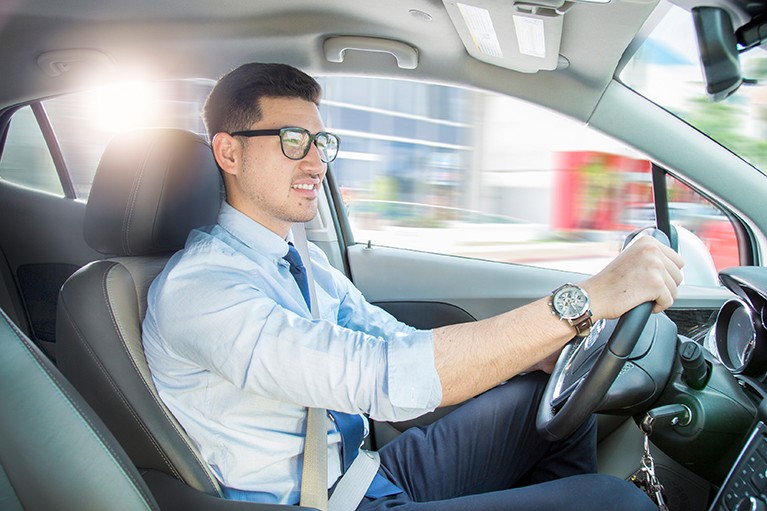Distracted Driving Awareness Month
April 1, 2022

If you’re like the average American, then likely you obtained your license at the age of sixteen. For many, this is the first of many huge responsibilities and your first step toward adulthood. Driving for many young teens represents more than just mobility, but also freedom and independence. However, with this also comes great responsibility as driving can also be very risky especially with the number of risky behaviors that many drivers exhibit today. More than 2.5 million drivers and passengers were treated in emergency departments as a result of being injured in motor vehicle traffic crashes in 2015. The economic impact is also notable: for crashes that occurred in 2017, the cost of medical care and productivity losses associated with occupant injuries and deaths exceeded 75 billion.
Motor vehicle crashes are a leading cause of death in the U.S. with over 100 people dying every day. Out of these, about 8 people every day in the United States are killed in crashes that are reported to involve a distracted driver.
Distracted Driving: How Big is the Problem?
Perhaps you are one of the many thousands of Americans who have been involved in your own fender bender and were able to get out of the situation without a scratch. However, there are thousands who don’t make it out of car collisions alive. It only takes one mistake to end a person’s life while on the road. In 2019, 36,096 lives were lost due to motor vehicle crashes. Seven percent of these fatalities were caused by distracted drivers, that’s a total of 3,142 lives lost. About 1 in 5 of those deaths were people who were not in vehicles —they were walking, riding bikes, or otherwise outside of vehicles.
Distracted driving crashes often go under-reported and the National Safety Council estimates that cell phone use alone accounted for about 27% of incidents in 2015. According to the CDC, every day about 8 people in the United States are killed in crashes that are reported to involve a distracted driver.
Types of Distraction
Distracted driving includes anything that takes your attention away from driving. Using your cell phone, a navigation system or even eating and drinking while driving are just a few common scenarios where a serious accident can occur on the road. Any distractions can endanger you, your passengers and others on the road. There are three main types of distraction:
- Visual: taking your eyes off the road
- Manual: taking your hands off the wheel
- Cognitive: taking your mind off driving
Who is Most at Risk?
According to the CDC, young adults and teen drivers are the most at risk for distracted driving behaviors. In 2018, twenty-five percent of distracted drivers involved in fatal crashes were aged 20-29, and in the same year nine percent of all teens who died in motor vehicle crashes were killed in crashes that involved distracted driving. Drivers aged 15-19 were more likely to be distracted than drivers aged 20 and older, among incidents within which someone died. Among these drivers, eight percent of drivers aged 15 to 19 were distracted at the time of the collision.
The CDC’s Youth Risk Behavior Surveillance System (YRBSS) monitors health risk behaviors among U.S. high school students, including texting or emailing while driving. In 2019, YRBSS found that 39% of high school students who drove in the past 30 days texted or emailed while driving at lease one of those days. The same students who texted or emailed while driving were also more likely to report other transportation risk behaviors such as: not wearing a seat belt, riding with a driver who had been drinking alcohol or driving after drinking alcohol.
What is Being Done to Prevent Distracted Driving?
In 2009, President Obama issued executive order 13513 which prohibits federal employees from texting while driving government-owned vehicles or when driving privately owned vehicles on official government business. This started a wave of other federal and state level policies that would seek to end distracted driving, especially the use of electronic devices while operating a vehicle. In 2010, the Federal Railroad Administration banned cell phone and electronic device use for railroad operating employees on the job. In the same year, the Federal Motor Carrier Safety Administration (FMCSA) banned commercial vehicle drivers from texting while driving. The FMCSA would ban all hand-held cell phone use by commercial drivers and drivers carrying hazardous materials the following year.
In 2014, the National Highway Traffic Safety Administration (NHTSA) started the annual “U Drive. U Text. U Pay” campaign along with numerous others to raise awareness of the dangers of distracted driving. The NHTSA, the federal agency that enforces vehicle performance standards and works with state and local governments to encourage road safety, releases annual crash data reports that speak to the conditions of road safety in the United States. In their 2020 annual crash data report the NHTSA found that fatal crashes increased by 6.8 percent of these 3,142 or 8.1 percent of all fatalities were a result of at least one driver who was distracted.
From this data, state and local agencies are able to develop their own laws to help address the issue. Many states have enacted laws to help prevent distracted driving. These include banning texting while driving, implementing hands-free laws and limiting the number of young passengers who can ride with teen drivers. Although data is still being collected to measure the effectiveness of these laws, high-visibility enforcement (HVE) efforts for distracted driving laws can be effective in reducing cell phone use while driving. HVE projects try to address distracted driving by increasing police enforcement of distracted driving laws and increase awareness of distracted driving through radio advertisements, news stores and other media. From 2010 to 2013, the NHTSA found that cell phone use fell with the implementation of HVE campaigns some as much as 6 percent.
Numerous other programs are also being put in place such as Graduated driver licensing (GDL) which helps new drivers gain experience under low-risk conditions by granting driving privileges in stages. Meanwhile, some states are taking other measures such as installing rumble stripes on highways to alert drowsy, distracted, or otherwise inattentive drivers that they are about to go off the road. These are just a few of the measures that local governments are taking to make roads safer for everyone.
How to Prevent Distracted Driving
Driving is a privilege and not a right and there is much drivers can do to help make our roads safer for everyone. Remaining focused on the road is paramount when it comes to preventing distracted driving. Whether it’s adjusting your mirrors, picking the music on the radio, eating or drinking while driving, it’s best to remember to do these things before or after your trip and not during. Most especially, drivers should avoid the use of any and all electronic devices such as a cell phone when driving. This includes hands free cell phone calls as holding conversations or sending assisted text messages while driving has been shown to distract drivers just enough to potentially cause an accident.
Passengers can also do their part by speaking up if their driver is not driving safely or is distracted while driving by asking the driver to focus on the road. Meanwhile passengers should also remember to reduce distractions for the driver by not engaging the driver in too much distracting conversation, or by ensuring not to engage in any activities that would distract the driver. Passengers can also help to assist the driver with navigation or other tasks that would be helpful in ensuring the driver’s attention stays on driving.
Parents of young drivers should talk to their children about the rules and responsibilities involved in driving and set an example for young drivers by practicing safe driving habits at all times on the road. Setting consequences can also help to encourage safe habits, and further engrain in them the idea that driving is a privilege and not a right and distracted driving has very serious consequences out on the road.
Road safety is all of our responsibility, and while more data is being gathered to better safeguard our roads, the tried-and-true safe driving practices that you learn when obtaining your driver’s license are still the golden standard. As technology continues to revolutionize the way we navigate from destination to destination we must never forget to practice safe driving habits while on the road and keeping our eyes, ears, and focus on the road ahead. For more info on how you can be a better, safer driver, check out these links:
- April is Distracted Driving Awareness Month - Learn What You Can Do
- National Highway Traffic Safety Administration - Distracted Driving
Sources:

